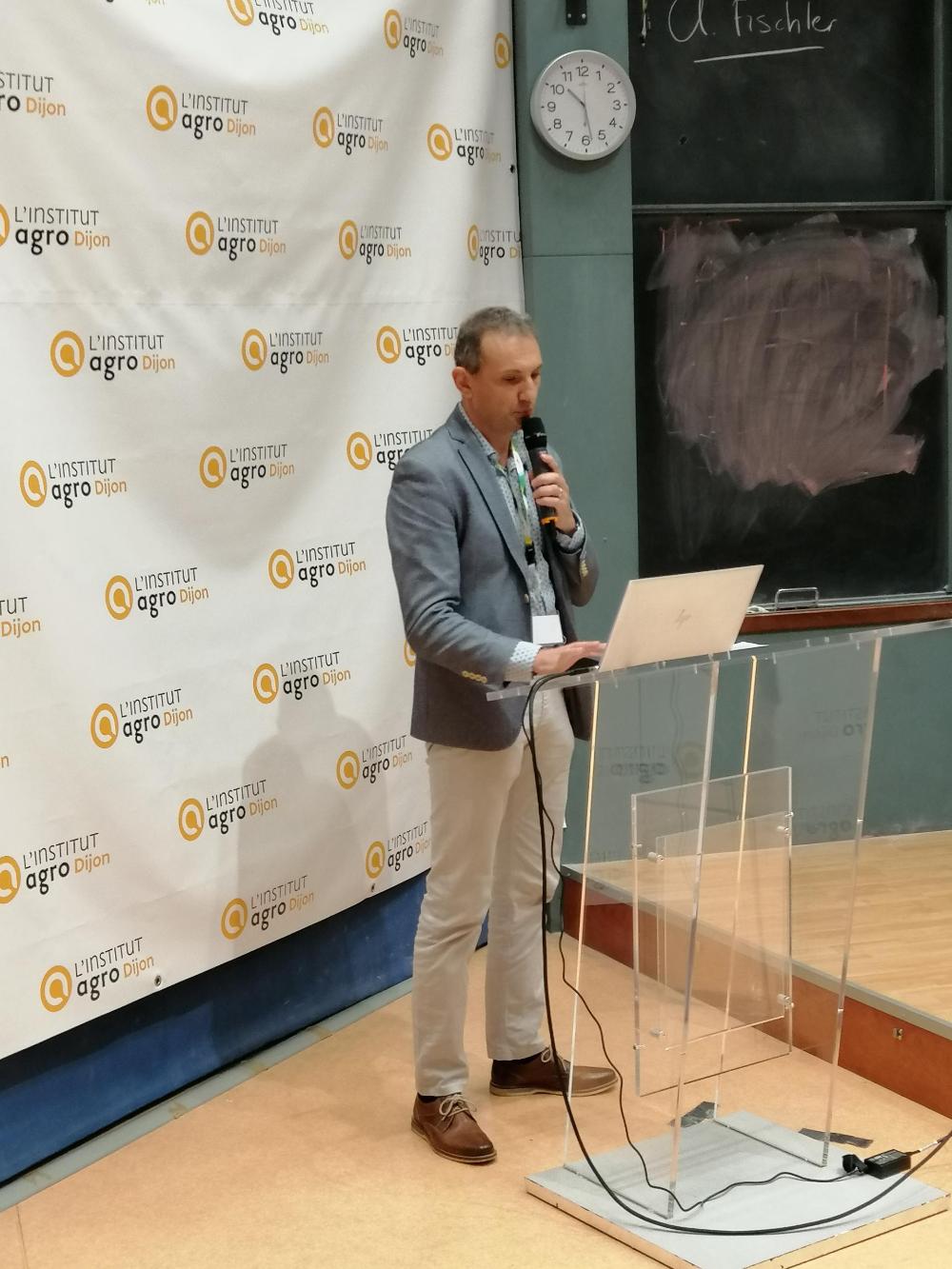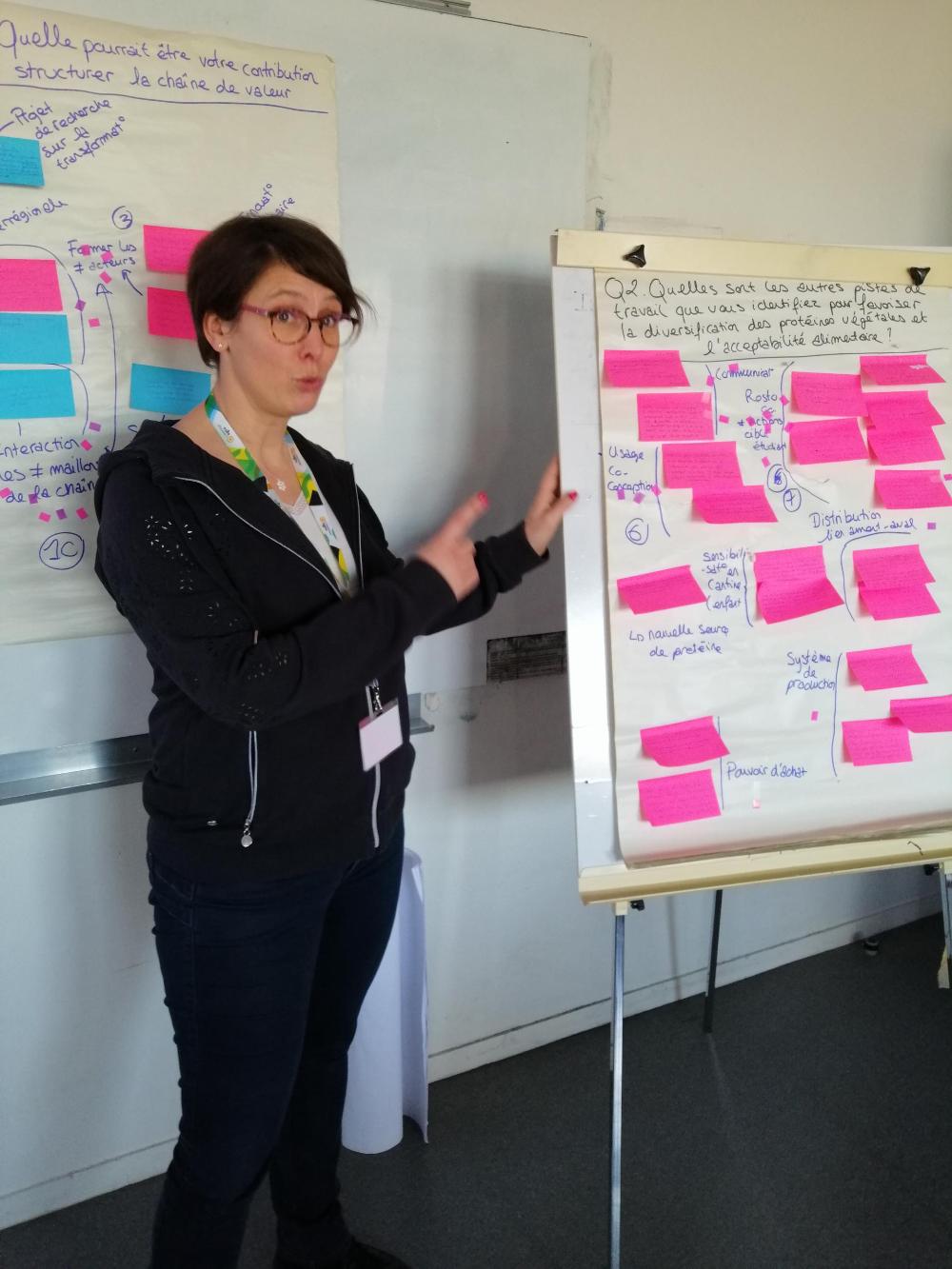What are the levers of action for a healthy and sustainable diet?
What are the levers of action for a healthy and sustainable diet?
How can we diversify our agricultural production to better meet consumer expectations? This is the purpose of the Carrefour de l'innovation agronomique, which took place on December 8 and in which Terres Inovia participated.
Terres Inovia's work is at the heart of societal concerns to find the levers of action towards a healthy and sustainable food. The technical institute participated in the Carrefour de l'innovation agronomique, on December 8, 2022, organized by the Agreenium alliance, at the Agro Institute in Dijon. This is why two experts from Terres Inovia, Delphine de Fornel, head of the Institute's Eastern zone, and Christophe Vogrincic, head of the Southern region, took part in this event, which aims to highlight the research work carried out in partnership on all the themes of agriculture, food and the environment.
During the day, experts' presentations and discussions focused on the theme: "Agricultural diversity and food diversity: what levers for action for a healthy and sustainable diet? They have highlighted concrete paths and actions to go from the field to the plate.
The observation of a lack of coordination between upstream and downstream
During this day, the link between production, upstream, and the diversity of consumers' diets, downstream, was highlighted.
François Mariotti presented the diversity of diets from a nutritional and health point of view. This professor of nutrition at Agro ParisTech indicated that diversifying products and their origins reduces the risk of exposure to contaminants. However, in order to increase dietary diversity, it is clear that a greater availability of products is required. Hence the need to favor foods with high nutritional density.
On the other hand, Antoine Messéan (INRAE), notes, on the production side, that rotations are shortening and that this diversification of production, expected by consumers, is limited by technical, organizational and institutional barriers, which creates a lack of coordination between upstream and downstream. This expert, director of the Eco-Innov unit at INRAE, wonders about solutions to support diversification. What does he recommend? To move away from reasoning by crop and to think in terms of a system approach by creating a real transition dynamic, with three stages: to maintain the dominant crops that are efficient and controlled, to introduce minor crops by valorizing ecosystem services, to set up compensation strategies and to have a dynamic management system to deal with uncertainties.
Diversification: the experience of FILEG, a seed legume chain in Occitania
In the thread of the need to diversify production to meet consumer expectations, Christophe Vogrincic was able to present FILEG, the territorial approach initiated by Terres Inovia since 2017 with all the actors of the territory to create a seed legume chain in Occitania. It is now an association, created in February 2022, which now includes more than 70 actors in the agri-chain, both production (conventional and organic), processing, distribution and consumption (animal feed and human).

Christophe Vogrincic presented the evolution and objectives of FILEG
The ambition of this collective is to have, in 2030, a territorialized, structured and sustainable sector (in environmental as well as economic and social terms) for human and animal food. It will create real added value distributed equitably among all the players in the sector, whether they are producers, collectors or processors...without forgetting that it is proof of a fine R&D dynamic financed collectively (public-private).
Today the association has a roadmap structured around 5 axes: production, animal and human food, an economic observatory and communication.
Plant protein materials: which sources for which food products?
Rémi Saurel, professor at the Institut Agro de Dijon, highlighted the innovations that have emerged in plant products, with the trends and constraints to their development, with, for example, a demand for plant proteins that has increased by 40%. Also noteworthy was the presentation by Philippe Pointereau, from Solagro, a consulting and engineering company in agro-ecology, on the link between biodiversity and diets and the fact of coupling the food and agricultural approach. He showed the impact that our consumption practices could have on production methods.
Production diversity: what levers for action?
During the day, workshops were also organized to identify the levers of action to enrich the diversity of agricultural production for healthy diets.
Delphine de Fornel co-led a workshop with the Regional Chamber of Agriculture of Burgundy Franche-Comté based on the findings of the Go proteins project. The workshop focused on the following topic: "Which diversification of plant proteins for which food acceptability? This workshop was able to provide information on the diversity of plant protein production in the region (feasibility, obstacles, assets, sector, ...), but also the regional needs in plant proteins and the transformation processes required for livestock.

Delphine de Fornel co-hosted the workshop "What diversification of plant proteins for what food acceptability?"
All the participants then contributed to proposing levers and operational actions to structure channels, boost the diversification of rotations towards more plant proteins (leguminous seeds) and increase the diversity of agricultural ingredients in healthy diets. The final objective is to analyze the levers that can jointly promote agricultural and food diversity.
Through the issue of agricultural and food diversity, many topics were addressed during this day: health, environment, economic and social impact, in addition to actions for agriculture, processing, distribution and consumption. It then appeared necessary to coordinate all these actors. How to drive this movement and find the right balance? Should we impose demanding approaches or, conversely, start with transitional models? These are fundamental reflections to be followed.